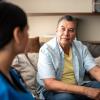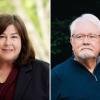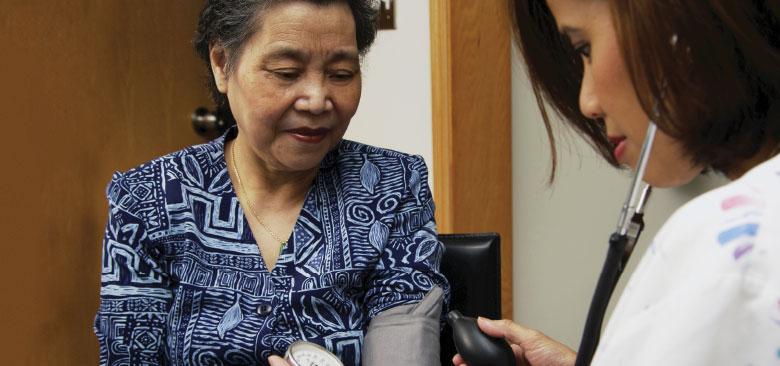
Why NPs Matter for Older Adults with Cancer
In her doctoral dissertation, Lorinda Coombs confirmed something she suspected was true from her own 17 years as a nurse practitioner (NP) working in hematology/oncology: Many older adults with cancer receive the bulk of their health care from NPs and physician assistants (PAs).
She drew on her dissertation for a paper she published in a May 2019 edition of the Journal of the American Geriatrics Society (JAGS). The paper was one of the first to examine NP and PA roles in delivering cancer care, and she and her co-authors hope the study and the areas of research it opens up can inform ongoing efforts to address gaps in care for older adults with cancer. Many such efforts fail to account for the availability of this skilled professional workforce, at least in part because the types and amount of care that NPs and PAs can and do deliver is so poorly understood.
Research Begins with Frontline Observations
Coombs received her PhD degree from the UCSF School of Nursing in 2018 where she served as a volunteer clinical faculty member until summer of 2019. The idea for her dissertation emerged while she was working as a hematology/oncology NP at Kaiser San Rafael.
“I had this cohort of very fit elderly people, who it made sense to consider treating, because in their cases, age was just a marker,” says Coombs. “They might have been 93, with myeloma, but they were on no other meds and were otherwise healthy.” She began searching the literature to understand how her fellow NPs work with this population, but there was almost no research on NPs’ role in specialty care, a fact that frustrated Coombs.
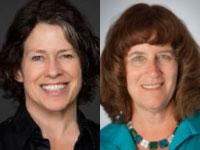 Lorinda Coombs (left) and Wendy Max “She was absolutely driven to study this problem,” says Wendy Max, a co-author on the paper, who was also one of Coombs’ thesis advisers.
Lorinda Coombs (left) and Wendy Max “She was absolutely driven to study this problem,” says Wendy Max, a co-author on the paper, who was also one of Coombs’ thesis advisers.
Once at UCSF, Coombs used Medicare data to measure the NP and PA workforce practicing in oncology with older adults. Her findings – that these professionals were, indeed, playing an important, if unrecognized care delivery role, particularly with older patients who live in rural settings and in the southern United States – convinced her that addressing gaps in care demanded that workforce development strategies consciously integrate the use of NPs and PAs.
“The message is twofold,” says Coombs. “People making a push for rural access to cancer care should know there is a resource already in place and that it is possible to flex that resource by giving those NPs and PAs regional or community access to specialists – including through telemedicine – for more complicated cases.”
Can NPs and PAs Truly Deliver Quality Cancer Care?
Coombs and her team understand that her paper is merely a starting point for advancing the role of NPs and PAs in oncological care. Until now, most research on outcomes delivered by NPs and PAs has focused on primary care, but they have been nearly invisible in research on specialty care outcomes.
“There have been a few papers that suggest NPs may be equivalent to oncologists for surveillance (caring for patients who are in remission), especially for breast cancer, but this is an area that requires much more study,” says Coombs, who in August 2018 began a two-year, NIH-funded T32 post-doctoral fellowship at the University of Utah College of Nursing. There, she is helping to compare outcomes for Huntsman at Home to usual care through the Huntsman Cancer Institute. Huntsman at Home is a clinical program in which NPs provide integrated, acute, complex and intensive supportive care to cancer patients and their families at home, with the help of a consulting physician.
“The majority of these patients are over 65 and the goal is to improve their experience of treatment, reduce in-hospital deaths and reduce overall health care costs,” says Coombs. “The initial analysis looks promising.”
One of Coombs’ co-authors on the JAGS paper – Tatjana Kolevska, regional chief of oncology for Northern California Kaiser Permanente and associate director of the Kaiser Permanente Oncology Clinical Trials Program – is also pursuing research on whether NPs can safely and effectively do more than is currently expected of them in many settings. Kolevska and Coombs met when they were working at the Oncology Fellows Clinic at ZSFG.
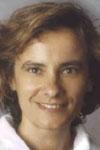 Tatjana Kolevska “Both Lorinda and I noticed that NP scope of practice in medical oncology and hematology is really quite high [despite California being a state that restricts scope of practice],” says Kolevska. “It became clear to me that with good algorithms and physician support, NPs can take on a good percentage of this work.”
Tatjana Kolevska “Both Lorinda and I noticed that NP scope of practice in medical oncology and hematology is really quite high [despite California being a state that restricts scope of practice],” says Kolevska. “It became clear to me that with good algorithms and physician support, NPs can take on a good percentage of this work.”
With an eye toward more efficiently delivering care to cancer patients, Kolevska’s team at Kaiser recently found that outside of a fee-for-service payment model, a practitioner can safely and effectively complete up to 85 percent of hematology referrals by reviewing a patient’s chart and making a recommendation rooted in carefully devised algorithms, thus eliminating the need for many face-to-face appointments.
“The magnitude of that finding is quite significant,” says Kolevska, noting it can facilitate as much as a tenfold increase in the number of patients being seen each day. The pilot study, published in Blood, was completed with oncologists doing the chart review. “Yet we believe the vast majority of these referrals are ones that trained NPs can handle – and that’s what we are testing at Kaiser right now.”
If Kaiser’s research team confirms that NPs can handle this work, Kolevska says they may take a similar approach with many cancer-related procedures, such as biopsies, paracentesis, and the administration of chemotherapy. In other settings, NPs have shown they are capable of handling this work independently without any loss of quality.
“[When you take fee-for-service reimbursement out of the picture], patients on chemotherapy do not need to be seen by an oncologist every three weeks; there are clear parameters that [clinicians] can follow to treat,” says Kolevska. Using algorithms and pre-specified workflows, NPs can oversee oncology nurses to complete many procedures. This can spread the time between physician appointments to once every two to three months, when there are new scans available to assess response.
Even for many complex patients, NP training is sufficient for them to make the connection between several diagnostic markers and options for care. “But they should have access to a physician at all times, if there is any kind of uncertainty or if something feels out of scope,” says Kolevska.
The ability to use NPs in this way can free physicians to only deal with those cases that truly demand their level of training and expertise. That’s important to Kolevska, because in addition to an existing shortage of oncologists in some areas, many of today’s oncologists are expected to retire over the next decade. “We just don't have enough fellows to replace them, especially with our aging population,” she says.
Given that fact, having physicians deliver care that can be done by others is costly and wasteful. “If there is work that can be done by an NP, we should have the NP do the work,” says Kolevska. “All of us should be functioning at the top of our scope.”
The Added Complexity of Older Adults
Coombs adds that assessment often becomes more complicated when working with older adults with cancer.
“In areas of the country where there are few oncologists, NPs, PAs or family and primary care physicians who are not board-certified in oncology rely on National Comprehensive Cancer Network guidelines for staging, workup, and recommendations, but these things are more nuanced in older people,” she says. “Should I give a full dose of chemotherapy? What determines that? Are the side effects worth it? What is the person’s prognosis? There is a lot of data to support a geriatric screening tool to assess cognitive capacity and functional limitations in older adults, for example, but we don’t yet have clear guidelines for these more complicated decisions.”
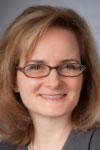 Caroline Stephens Yet, argues Caroline Stephens – another of Coombs’ co-authors and thesis advisors at the UCSF School of Nursing – NPs appear to be well equipped to serve this population, given their philosophical approach, education and training in treating patients from a holistic perspective.
Caroline Stephens Yet, argues Caroline Stephens – another of Coombs’ co-authors and thesis advisors at the UCSF School of Nursing – NPs appear to be well equipped to serve this population, given their philosophical approach, education and training in treating patients from a holistic perspective.
“Often a patient with primary metastatic breast cancer, might also be, say, a caregiver for grandchildren,” says Stephens. “We are trained to navigate that and make sure the care is person-focused and congruent with each individual’s goals, values and preferences.”
Scope of Practice
The questions about whether NPs and PAs can deliver quality care and whether NP training actually adds value to cancer care for older adults play into ongoing discussions about scope of practice for NPs and PAs, for whom the regulations differ considerably from state to state.
Despite California’s restricted scope of practice regulations, Coombs says, “Scope of practice is primarily driven by institutional protocols and as an NP in California, I often had tremendous independence.” Yet she hastens to add there are many institutions that don't give NPs that kind of freedom. Moreover, restricted scope can influence where NPs practice and reduce the supply in some areas.
“This is the struggle we face,” says Stephens. “I've worked in a hundred nursing homes in three states. Why should my scope be reigned in in one state and not in another?” Similarly, she adds, Coombs’ study begs the question of why it is somehow safe for NPs to provide care in underserved settings, but not safe in more populated settings. That’s why the data on outcomes is so important to obtain.
“I believe if we allowed NPs to function at the top of their license, we could expand the cancer workforce, and improve it with a more holistic, interdisciplinary approach,” says Stephens. “We would be doing what's right for patients and improving access to care.”
Need for More Focused Education
Yet even with full scope of practice, all agree that it is also important that oncology NP training programs – traditionally shorter and less expensive than physician training – must expand to meet the need.
“Right now, there are very few oncology-focused NP programs in the country,” says Coombs. “Most NPs become family or geriatric NPs and learn about oncology, like I did, through a mentor — in my case, a physician who I met with once a week for years to present cases and talk about research.”
“Education is extremely important for the future of oncology care,” says Kolevska. “The deficit in physicians is also present in NPs and as a country, we need to open more schools and maybe make the oncology NP career track open in undergraduate colleges so young people can see the opportunity early on.”
Either way, says Max, Coombs’ work showing the important role NPs are playing in older adults’ cancer care is a potential game-changer. “I hope it gets more visibility,” she says. “We’re always talking about health care costs and Lorinda found that populations with high rates of cancer and less access to oncologists can still find quality care with NPs and PAs. That was my takeaway.”
For her part, Coombs says, “I was just describing a phenomenon already in existence. We have a large group of people who need both surveillance and active treatment and I hope we can take advantage of what is already happening to ramp up capacity in an efficient, cost-effective way.”

